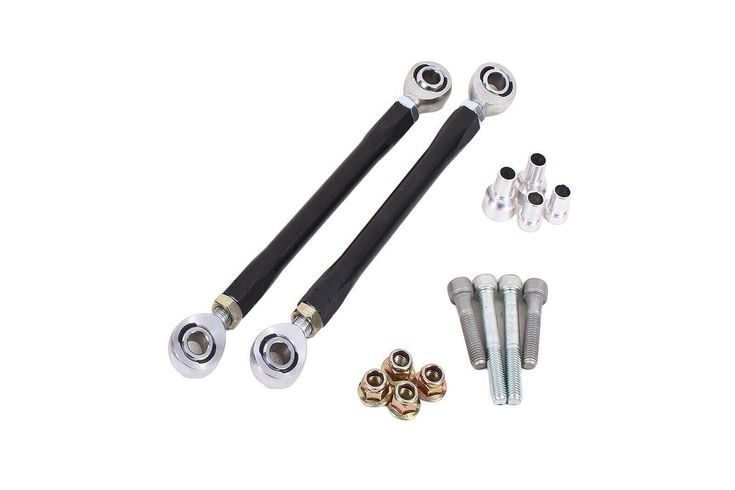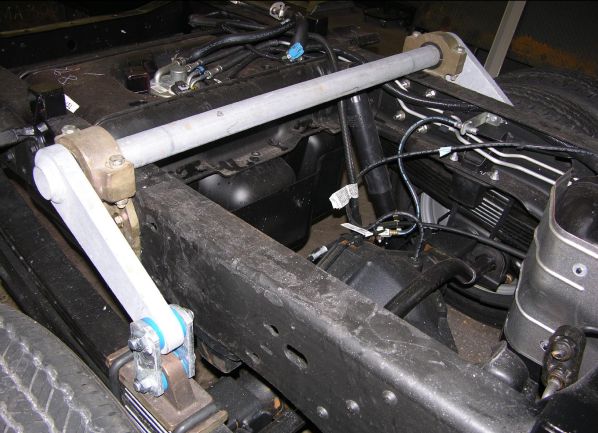Repair instructions
How to Replace Sway Bar Links
Overview
Replacing sway bar links is a routine repair that can significantly improve your vehicle’s handling and ride quality. You’ll need basic automotive tools like a breaker bar, jack, jack stands, a ratchet with the right socket sizes, and wrenches. The steps may vary slightly depending on the type of sway bar links on your car, but generally, the job is straightforward and can be completed in under an hour, unless rust or corrosion has complicated the process.
Sway bar links connect the sway bar to the control arms, playing a crucial role in stabilizing your vehicle while driving. Over time, these links can wear out due to factors like corrosion, rust, metal fatigue, or overloading.
Sway Bar Link Replacement: Step-By-Step
Tools You’ll Need:
- Breaker bar
- Jack and jack stands
- Ratchet with the correct sockets and wrenches
- Torque wrench
- Safety glasses
- Wheel chocks
- Appropriate-sized Torx or Allen wrenches (depending on vehicle)
Note: Always consult your vehicle’s manual for specific repair instructions. These are general guidelines to assist in your replacement process.

Step 1: Sway Bar Link Removal
- Safety First: Put on your safety glasses to protect your eyes from debris.
- Loosen Lug Nuts: Use a breaker bar to loosen the lug nuts on the wheels (do not remove them completely yet).
- Lift the Vehicle: Use a jack to lift the car and securely place it on jack stands. Don’t forget to chock the rear wheels and engage the parking brake.
- Remove the Wheel: Take off the lug nuts by hand, remove the wheel, and set it aside.
- Remove the Sway Bar Link:
- Ball Joint-Type Sway Bar Link: These links have two nuts that need removal. First, hold the stud with an open-end wrench, a Torx, or an Allen wrench, depending on the design. Then, use a ratchet and socket to remove the retaining nut. Repeat this step for the other nut and remove the link.
- Bolt-Type Sway Bar Link: For these, hold the bolt with a wrench to prevent it from spinning. Use a wrench or socket to remove the nut securing the stabilizer link. Afterward, pull the bolt up through the sleeve and bushings.
Step 2: Sway Bar Link Installation
- Compare Parts: Before installing the new sway bar link, compare it with the old one to ensure they match in design and size.
- Install the New Link:
- Ball Joint-Type: Slide the stud into the mounting slots of the control arm and sway bar.
- Bolt-Type: Insert the bolt through the sleeve and bushings, aligning it with the slots in both the control arm and sway bar.
- Reinstall the Nuts: Thread the retaining nuts on, but don’t tighten them fully yet.
- Reinstall the Wheel: Place the wheel back on and hand-tighten the lug nuts.
- Lower the Vehicle: Carefully remove the jack stands and lower the vehicle back to the ground.
- Torque the Nuts: Use a torque wrench to tighten the lug nuts to the manufacturer’s specifications. With the car at ride height, torque the sway bar link nuts as well. Hold the stud or bolt while tightening to prevent spinning.
Step 3: Repeat (if Necessary)
If you are replacing both sway bar links (which is recommended), repeat the process on the opposite side of the vehicle.

How Long Does it Take to Replace Sway Bar Links?
Replacing sway bar links is typically a quick job for professionals—usually taking less than an hour per pair. However, if corrosion or rust is present, the repair time could be extended due to the additional effort required to break loose stuck parts.
Why Would a Sway Bar Link Break?
Sway bar links commonly break due to:
- Wear and Tear: With time, miles, and regular use, sway bar links can degrade.
- Rust and Corrosion: Exposure to moisture and road salts can cause links to rust and weaken.
- Overloading: Exceeding the vehicle’s weight capacity stresses the sway bar links, potentially causing them to snap.
- Metal Fatigue: Over time, the metal can fatigue, especially if the vehicle has seen rough driving conditions or uneven terrain.
What Does a Sway Bar Link Do?
The sway bar link connects the sway bar (also known as a stabilizer bar) to the control arm. The sway bar helps prevent body roll during cornering and enhances vehicle stability, especially when driving over bumps. Vehicles typically have both front and rear sway bars, each connected to their respective control arms by sway bar links.
Where to Find Replacement Sway Bar Links
If you’re experiencing a rough ride or clunking sounds from the suspension, it may be time to replace your sway bar links. Quality sway bar links can be easily sourced through suppliers like CarParts.com. With a user-friendly catalog and fast shipping, you can get the correct parts delivered right to your door. Plus, many parts come with a lifetime replacement guarantee and a low-price promise, ensuring you get the best deal for your repair.
Get your replacement sway bar links today, and get back on the road with a smoother, more stable ride.
